A medicinal herb native to Europe and Asia, mugwort has had known benefits for centuries throughout the world. Its earliest introduction to North America was in the early 1600s when Jesuit missionaries migrating from Europe brought it to Canada. Since then, it has spread south into the eastern United States, and gradually, west as well.
Mugwort (Artemisia vulgaris) is known for many things, and the use truly depends on the forager’s needs. It has been known by many different names: St. John’s herb, sailor’s tobacco, felon herb, and more.
Some common names for mugwort coincide with documented uses. For example, St. John the Baptist apparently wore a girdle of mugwort to help relieve stomach pain. In Ancient Rome, soldiers would put mugwort in their shoes to help alleviate foot pain from long marches.
As mentioned, mugwort was originally introduced to North America from Europe, which is where it grows native (also in Asia). There are many different varieties of mugwort, and as settlers began moving further West, it was discovered some subspecies (i.e., different varieties) were already growing here and native to North America. In the United States, I’ve seen mugwort grow from Vermont south to North Carolina, and out west throughout California. I’ve also seen mugwort in France.
Medicinal Uses and Benefits of Mugwort
The few common name explanations provided above give an idea of how mugwort can be used. Mugwort has been used for centuries to provide pain relief, however, more can be gained from this plant.
Mugwort helps create feelings of relaxation, and therefore, relieves stress and anxiety. It can help one sleep better and have vivid dreams, as well as relieving muscle tension, headaches, and itching.
Related Post: 6 Healing Herbs You Should Know About
Mugwort has also been used to help improve blood circulation, thereby boosting energy levels. It supports liver and digestive health and increases urine output. It can help regulate menstrual cycles as well.
People have also found success using it as an insect repellant due to its strong odor.
Every part of this plant — roots, leaves, stems, and blossoms — has been used in traditional folk medicine and made into teas, tinctures, extracts, tonics, powders, smoking blends, and essential oils.
The above-ground portions of mugwort are what’s used to make essential oils. Compounds found in mugwort essential oil include camphor, pinene, and cineole. These compounds are said to contain potent antioxidants, antibacterial, and antifungal properties.
All parts of mugwort, including the roots, contain a chemical called artemisinin which is said to help regulate menstrual cycles, and induces labor in pregnant* women by causing contractions of the uterus. It has not been proven, but artemisinin is said to have anticancer properties as well.
Mugwort has been used (and found to have success) in treating the following conditions:
- Depression and anxiety
- Colic, diarrhea, and constipation
- Insomnia and chronic fatigue
- Nausea and vomiting
- Headaches, migraines, and epilepsy
- Skin conditions including eczema
- Amenorrhea (irregular or absent periods)
Chinese medicine has traditionally used this plant for centuries. One of the documented uses in Chinese medicine is moxibustion – aka smudging sticks similar to how white sage is used. Moxibustion is the practice of rolling mugwort into bundles, igniting it, and waving the smoke over parts of the body seeking treatment. This has been used as an aid to acupuncture as well.
Note: The CDC has not tested or approved the above uses.
* Pregnant women should practice extreme caution with mugwort, or altogether avoid this plant.
Mugwort Identification and Growth
Mugwort is a flowering herb that many consider to be a common weed because it spreads rather aggressively and can easily take over gardens and roadsides. Mugwort isn’t picky about where it grows. It prefers moist, well-draining soils in full sunlight, but once established, is hardy and can handle periods of either drought or inundation for small periods of time.
Mugwort has a unique aroma that is its key identification factor. The scent has been described as camphorous and sage-like, perhaps a bit earthy and musky. Depending on the person, the smell can be experienced as quite nice. Mugwort can grow to be a few feet high (up to 6 feet), with stout, robust stems. The stems can vary from green to deep purple in color. They are usually pubescent, being covered in soft, white hairs.
The top side of the leaves are light to dark green. The leaf shape is highly variable, with younger plants having small oval-shaped leaves with points, and older plants having deeply lobed, irregular leaves. Depending on the variety, the leaf shape can vary even more.
Mugwort flowers grow in racemes or branching clusters, depending on the variety. The flower heads are not glamorous with no petals, short (or no) stalks, and round or egg-shaped flower heads. Color can vary from yellow to reddish-brown. The flowers can be erect or drooping, and only bloom during the summer months.
While mugwort is easily identifiable with its unique characteristics and smell, it can be easily mistaken for other species if you aren’t properly informed or familiar with it. This can lead to rather unfortunate (but potentially comical) situations using alternative plant species and expecting mugwort-like results.
For example, the most common plant mugwort is mistaken for is ragweed. The two plants are related, but many people have allergies to ragweed, and should be careful when experimenting with mugwort to ensure an allergy is not present there as well. Mugwort allergies are less common than ragweed allergies, but caution should still be taken.
Things to be aware of to help distinguish the two plants.
- Mugwort has a strong aromatic scent, ragweed does not.*
- Mugwort is silvery-white on the underside of the leaves, ragweed is not.
- Mugwort’s stems have white hairs, ragweed’s stems do not.
- Mugwort generally has thicker, less lobed leaves whereas ragweed’s leaves are thinner and have deeper lobes.
* The biggest identification factor between the two is the scent.
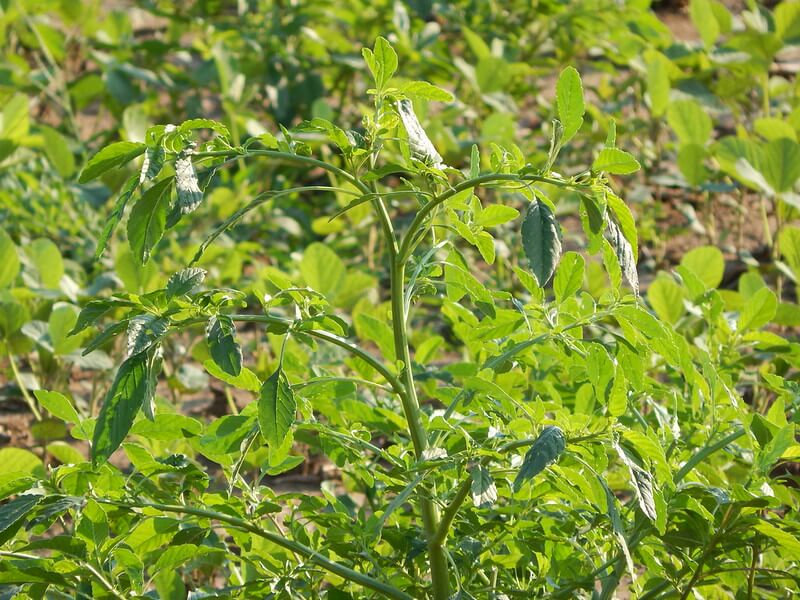
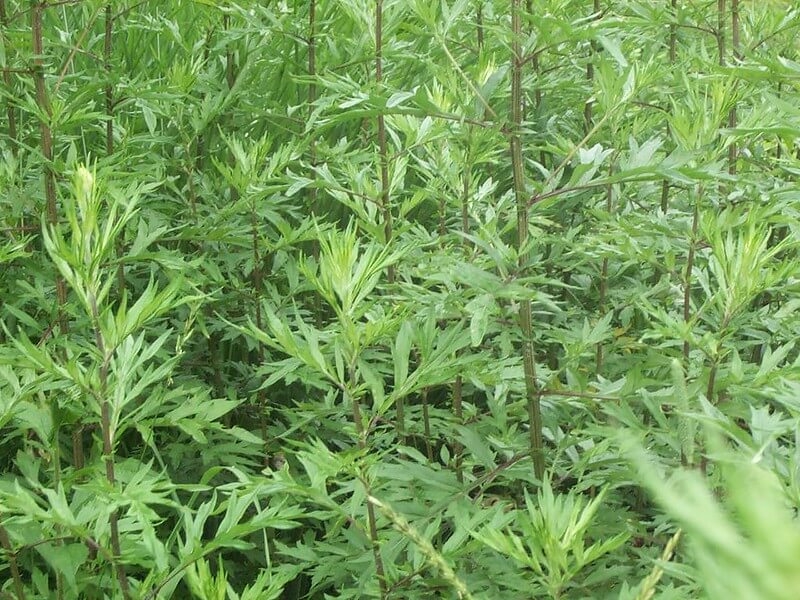
My Experience With Mugwort
My first introduction to mugwort was when I was working on a farm with a friend who was constantly raving “Mugwort this and mugwort that.” For a while, I tuned out, not understanding why she was so excited, but I finally asked her about it. Her response was “You can make it into tea, smoke it, sleep with it under your pillow, whatever! It just helps you relax and promotes vivid dreams.” I was intrigued and asked her to identify it for me. She quickly pointed to several specimens around us and said it grew everywhere.
Later on, I was drying some in the kitchen when my householder came in and asked what I was doing. I told him “This is mugwort! It helps you relax and promotes vivid dreams! I’m gonna dry it and make tea.” He began to hysterically laugh and suggested I do more research because it does a little bit more than that. Turns out, the reason mugwort helps you to relax and promotes vivid dreams is because it’s technically classified as a mild, legal, psychedelic! Well, you learn something new every day.
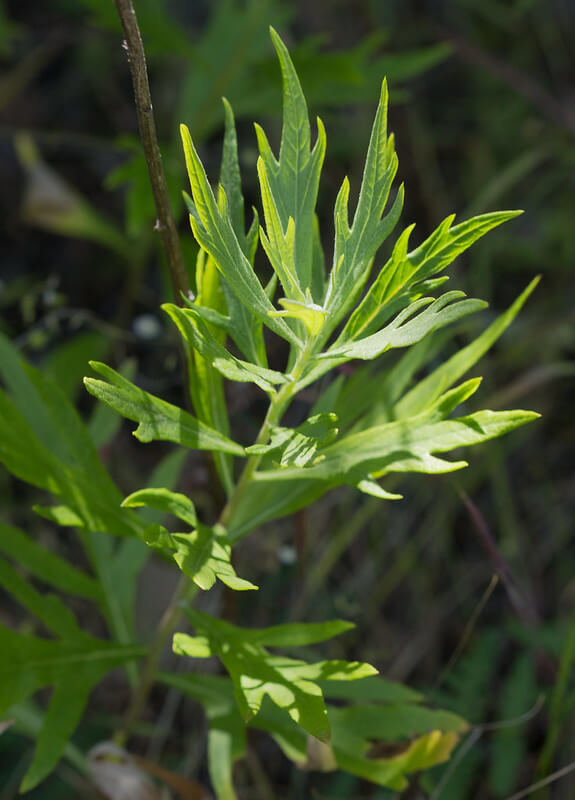
Before leaving that farm, I harvested mugwort for myself and gave a few bundles away to dear friends. Then I set off on a trek where I had little to no phone signal. And of course, I brought mugwort along. About the 3-week mark, I got a random spot of phone signal where a few messages came in; one from a dear friend I’d given a bundle of mugwort when I left the farm. This friend comically, and politely informed me that the mugwort I bestowed upon him was indeed not mugwort, but actually ragweed! He cautioned me to be careful with what I had. As mentioned, ragweed and mugwort are very similar, and the untrained eye can be easily fooled!
As a last and also comical, but likewise informational sidenote, ragweed was used by Native Americans as a dietary supplement to alleviate constipation. So just imagine the side effects of drinking ragweed tea when you are not constipated. Proceed with caution.

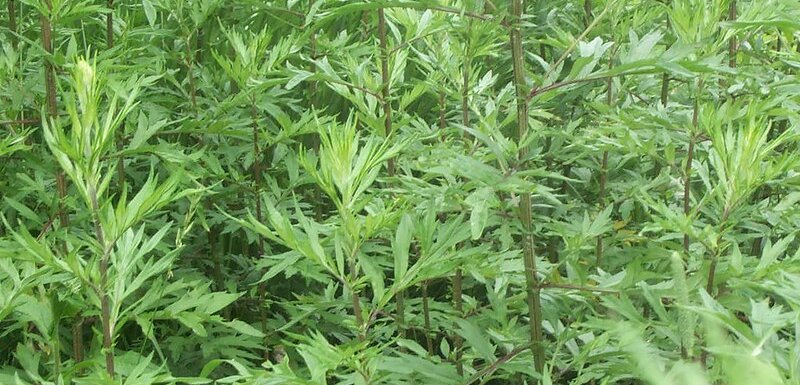
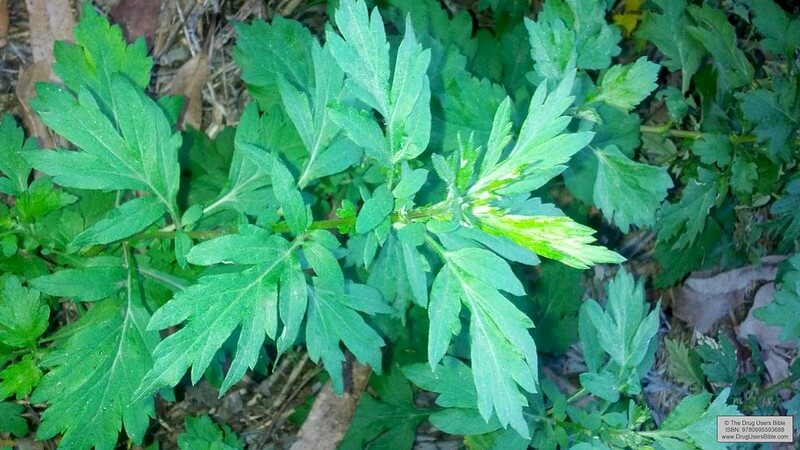
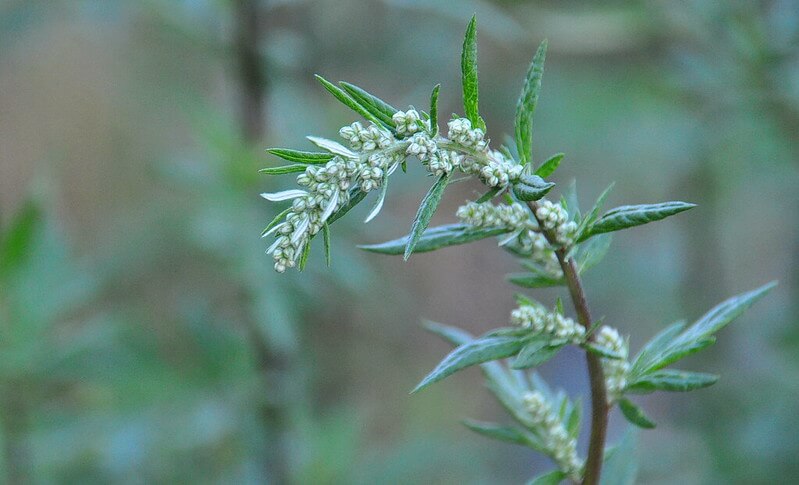







































Leave a Reply